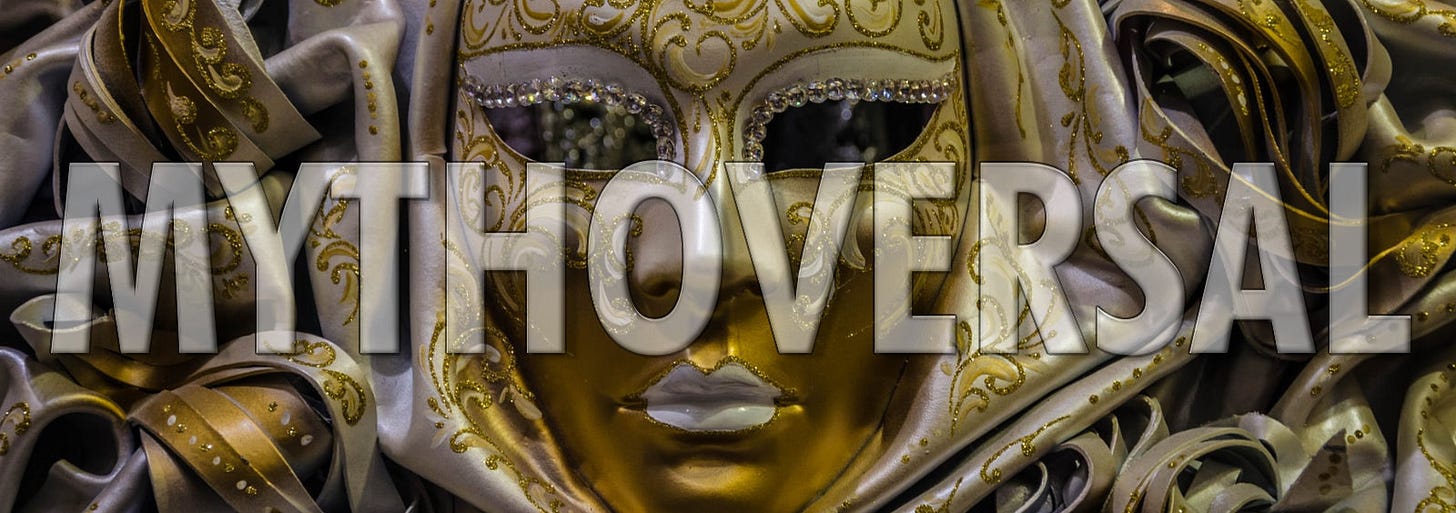Io Saturnalia and a Happy New Year
Kronos, the father of Zeus, is still the life of the party
Merry Christmas, Happy Solstice, and Io Saturnalia!
If I were better organized, I’d have prepared a detailed retrospective on the year, a bunch of highly entertaining top ten lists, a countdown—maybe a series of countdowns—all slickly produced on multiple streaming platforms.
Instead, you’re getting an email copy-pasted into a newsletter template. Io Saturnalia. But speaking of Saturnalia, did you know that this Ancient Roman peri-Solstice festival was based on a Greek festival that also honored the Father of the Father of the Gods?
From Kronia to Saturnalia
In Athens and Western Anatolia, Kronia was a mid-summer festival that coincided with the first harvest, named for scythe-wielding Kronos, a god of Agriculture and the Passage of Time, two things that were highly correlated in agrarian cultures. Kronos is often depicted as a baby-eating monster who castrated the sky, but he was remembered fondly by the Romans for presiding over a Golden Age of Mankind in a world of easy living and peace.
The Romans moved their version of Kronia to mid-winter, when everyone needed a lift of spirits, and made it a festival to celebrate good times past. Auld lang syne, as Robert Burns would put it.
From Saturnalia to New Year’s Eve
Have you seen Kronos lately? Of course you have. He’s the guy who says goodbye to us every year but never ends up actually leaving.
The Ancient Greeks believed that Kronos ruled the cosmos before Zeus was a glimmer in Rhea’s eye, the Ancient Romans celebrated Saturn as the Lord of Good Times Past, and here he remains as Father Time, still the life of the party, thousands of years later.
Saturnalia was a festival of wild parties, role reversals, gift giving, wild parties, pajamas in the daytime, random acts of kindness, wild parties, and even more wild parties. In the alternate universe where I have my stuff together, imagine that I’m streaming a video to you in my pajamas from a wild party. “Lift another cup to the baby-eating monster who castrated the sky!”
Have a Not-Homer Non-Fungible Sigillaria
Imagine also that I’m handing out gifts. All right, you don’t have to imagine. The traditional Saturnalia gift was a sigillaria, a little wax or clay figure of a god or hero from mythology. A token. So I’ve been giving out modern sigillariae in the form of non-fungible tokens made from Polygons, which I’m told are eco-friendly and more durable than wax. If you want an Inverse Homer in your neck of the blockchain, just let me know. All I need is a cryptowallet address to send him into along with a bonus copy you can give to a friend.
Introducing the Medusa Collection
If you’re already a collector of mythology-themed NFTs, or have been waiting for a good excuse to dive in, definitely check out the Medusa Collection from Mieke Marple.
In recent years, some survivors of sexual violence have adopted Medusa as a symbol of defiance and resilience, reframing the ability to petrify men as being Athena’s gift of protection rather than a curse. Furthering this narrative, Marple has created a collection of 2,500 generative works, each unique, translated from sculpture into colorful visuals.
According to a report released by ArtTactic in early November, female artists represent only 16% of the NFT Art market with their work valued at only 5% of total sales. Hopefully the positive reception of Marple’s project, among others, can start to shift these numbers toward more equal representation in a market where the work of female and gender-diverse artists can be fully valued and appreciated.
My favorites are the “brainstorm” Medusai. To me, these subtly represent the protection of Athena, a goddess of the mind who often had access to her father’s thunderbolts. Some examples below:
#415 in the collection is a special “noir” Medusa based on a marble bust by 17th Century Italian sculptor Gian Lorenzo Bernini. #205 in the collection is special “inverted” Bernini Medusa in profile. #227 in the collection is based on a 16th Century bronze sculpture of Perseus with the head of Medusa by Benvenuto Cellini. Other Medusai in the collection draw from the sculputres of Antonio Canova and Harriet Goodhue Hosmer.
Looking Forward
It’s been quite a year creatively for me, moving from novel-in-verse retellings of the Trojan War into serialized fiction, exploring the origins of Heracles/Hercules/Melqart, releasing chapters from my long-neglected Galaxy Games novel, growing this newsletter, and dipping my toes into NFTs. I’m looking forward to more mythology next year, putting out some actual books, and getting involved in even more new tech storytelling. I appreciate everyone who subscribes to this newsletter for your support and feedback. Is there anything you’d like to read more about? Just let me know.
Happy New Year 2022,
—Greg R. Fishbone, Mythology Disruptor
Mythoversal brings inclusion to Greek mythology by broadening representation, amplifying marginalized identities, and reversing centuries of gatekeeping and erasure. The site is the launchpad for my Becoming Hercules serial on Kindle Vella and various other mythic retellings.
Cryptoversal is a publisher of NFT books and blockchain blockbusters, debuting with the "Mad Messages" Collection of 32 unlockable book chapters minted to the eco-friendly Polygon sidechain. Together, these limited-edition NFTs reveal the unpublished third novel in my Galaxy Games series (which is also being serialized on Kindle Vella).








